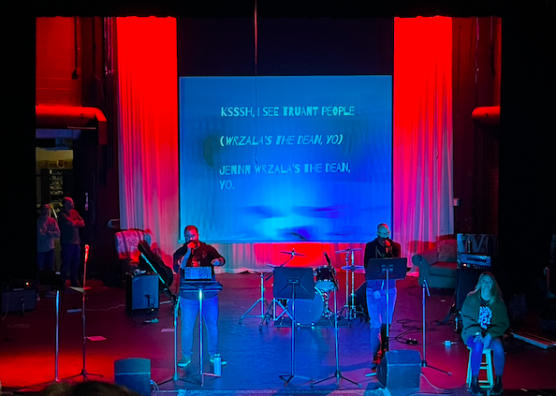NFTs: Not Fun for The Environment
December 21, 2021
The air in Christie’s is tense. Buyers sit restlessly, anxious as the bids roll in. The current highest bid rests at 16.9 million dollars. Countless priceless artworks and artifacts have passed through the reputable auction house but none have been remotely similar to the one currently up for auction. No one bids higher and the transaction is finalized with the swing of the gavel. However, the winner of this auction did not walk away with a historical painting or ancient artifact, but rather nine PNG files of computer generated pixel portraits part of an NFT project called CryptoPunks.
Hailed as the future of digital art collection and a fundamental step towards the decentralization of the world’s data, NFTs have recently been all the rage among the tech community. But what even are NFTs? Non-fungible tokens, commonly referred to as NFTs, are defined as any unique piece of digital information that is linked to the Ethereum blockchain. Therefore, any NFT file can be copied and saved, but that copy, while appearing exactly the same, is not the original NFT as it is not linked to the Ethereum blockchain.
The environmental cost, however, is often overlooked. Ethereum, the cryptocurrency used to purchase NFTs, is mined. During crypto mining, computers are tasked with solving complex mathematical equations in order to uncover new blocks of crypto. The value of cryptocurrency such as Ethereum is tied to the difficulty of the math problem and ultimately the scarcity of the crypto itself. This standard or general consensus algorithm is called Proof of Work or POW for short.
To the sect of the population who already have access to such hardware and the tech know-how, cryptocurrency mining may appear highly appealing as it seems like a low cost and risk but high reward venture. However, crypto miners often do not account for the environmental impact of running tens of hundreds of computers 24/7. A single Ethereum transaction uses 209.7 kilo-watt hours of energy which is equivalent to almost 8 days of energy consumption by an average American household. That same transaction would also release around 100 kilograms of carbon dioxide into the atmosphere. And it will only get worse.
As demand rises with increased interest in crypto, so does incentive for mining, leading to a rapid increase in mining. In order to maintain the value and scarcity of Ethereum in accordance with POW, the mathematical equations that mining computers must solve to unlock new crypto gets more difficult. The more difficult the problem, the longer it takes for the computer to solve which means more energy is required to power that computer. In 2021 alone, the Ethereum ecosystem consumed enough energy to power Kazakhstan and released the same amount of carbon dioxide as Hong Kong. Is placing excess strain on the Earth’s already fragile ozone layer really justifiable for such a pointless and trivial commodity? In an era where humanity’s days on Earth can be numbered, the further acceleration of our demise for the sake of profit is shameful. Computer generated pixel portraits are not worth thinning the ozone layer over.
With the horrible environmental cost compounded with the generally superficial nature of the product, NFT’s are, to plainly put it, stupid. Wealthy Europeans of the 18th century purchased ridiculously expensive pineapples to display in their homes to flaunt their wealth and connection to the exotic New World. Tech bros of the 21st century purchase ridiculously expensive PNG files to display on Twitter to flaunt their wealth and connection to the new mysterious Web 3.
At the end of the day, NFTs are a product of the free market. While naysayers may scoff at the ridiculous prices people are willing to pay for nine PNG images, the market still exists. When innovation for the sake of profit is prioritized, the end result always creates innovative new ways for the rich to flaunt their wealth in increasingly morally questionable avenues. However mind-boggling pointless, the NFT industry is here to stay for the foreseeable future. Yet, the freedom to exist does not and should not shield NFTs and the greater crypto ecosystem from well deserved criticism and mockery.



